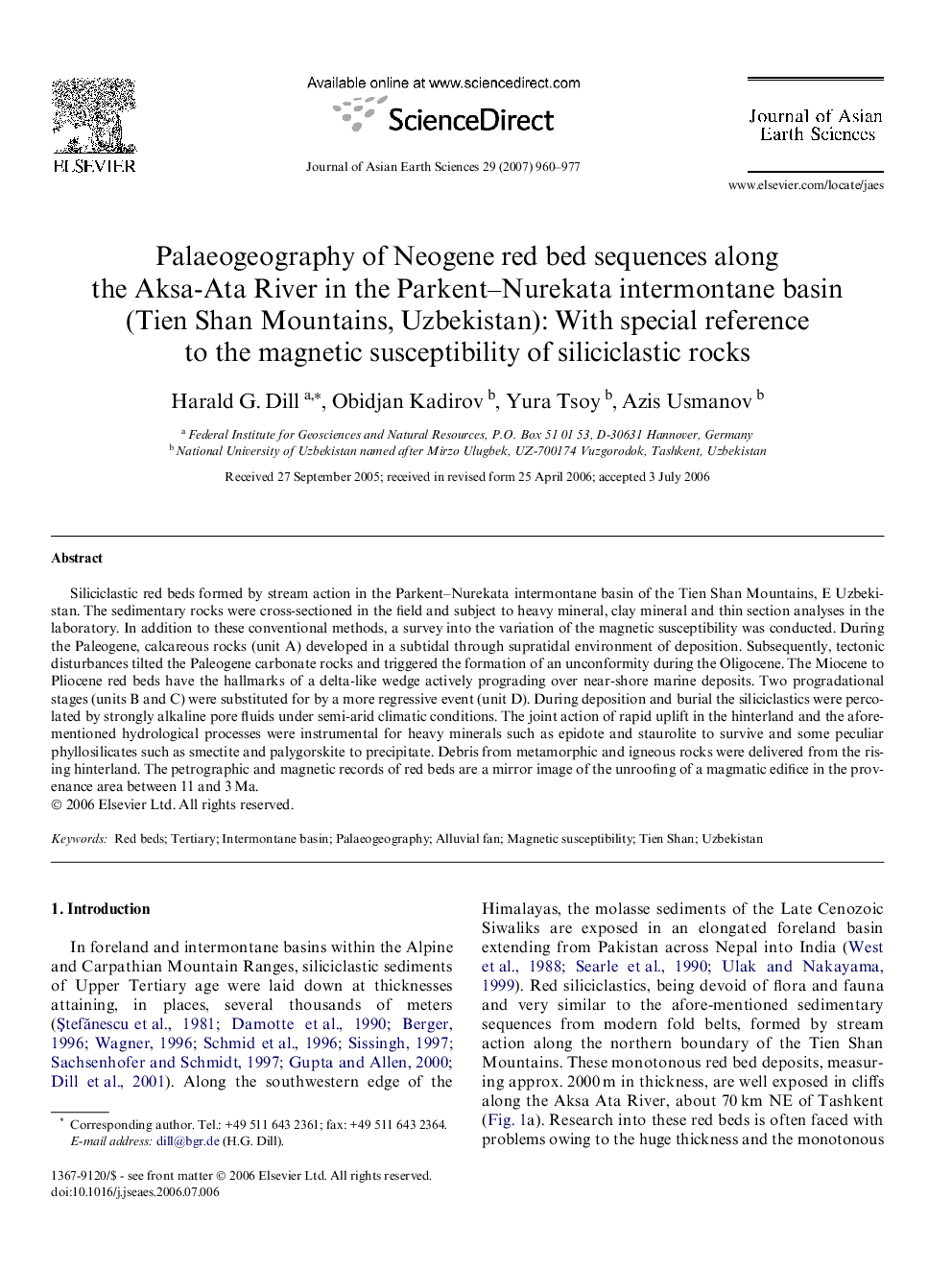| Article ID | Journal | Published Year | Pages | File Type |
|---|---|---|---|---|
| 4732595 | Journal of Asian Earth Sciences | 2007 | 18 Pages |
Siliciclastic red beds formed by stream action in the Parkent–Nurekata intermontane basin of the Tien Shan Mountains, E Uzbekistan. The sedimentary rocks were cross-sectioned in the field and subject to heavy mineral, clay mineral and thin section analyses in the laboratory. In addition to these conventional methods, a survey into the variation of the magnetic susceptibility was conducted. During the Paleogene, calcareous rocks (unit A) developed in a subtidal through supratidal environment of deposition. Subsequently, tectonic disturbances tilted the Paleogene carbonate rocks and triggered the formation of an unconformity during the Oligocene. The Miocene to Pliocene red beds have the hallmarks of a delta-like wedge actively prograding over near-shore marine deposits. Two progradational stages (units B and C) were substituted for by a more regressive event (unit D). During deposition and burial the siliciclastics were percolated by strongly alkaline pore fluids under semi-arid climatic conditions. The joint action of rapid uplift in the hinterland and the afore-mentioned hydrological processes were instrumental for heavy minerals such as epidote and staurolite to survive and some peculiar phyllosilicates such as smectite and palygorskite to precipitate. Debris from metamorphic and igneous rocks were delivered from the rising hinterland. The petrographic and magnetic records of red beds are a mirror image of the unroofing of a magmatic edifice in the provenance area between 11 and 3 Ma.
